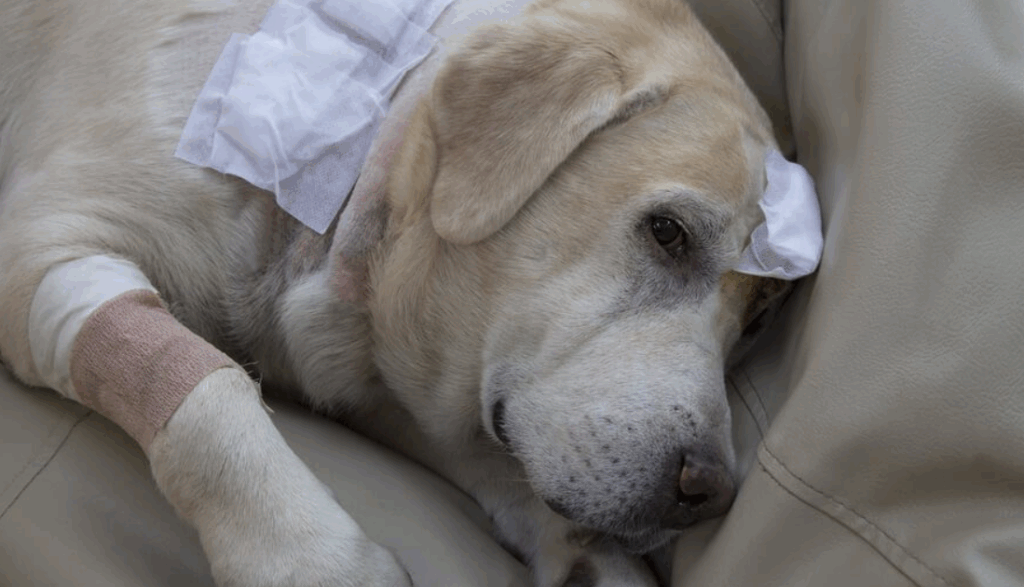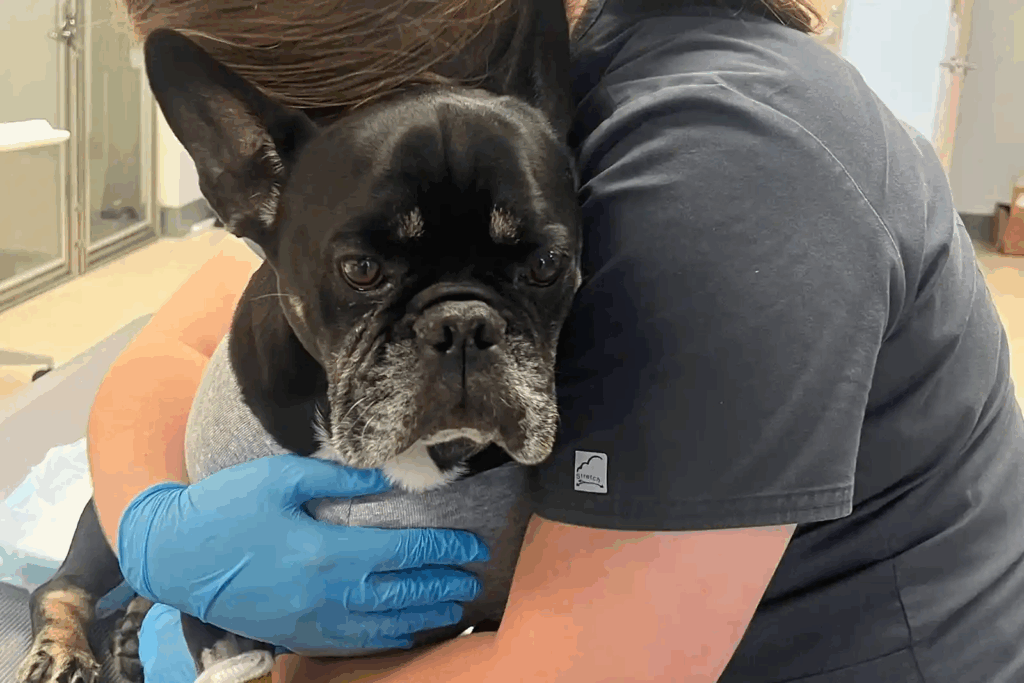Understanding Brain Cancer in Dogs: Symptoms, Treatment, and Prognosis
- What Is Brain Cancer in Dogs?
- Common Symptoms of Canine Brain Tumors
- Different Types of Brain Tumors Found in Dogs
- How Brain Tumors Affect a Dog’s Behavior and Motor Skills
- How Veterinarians Diagnose Brain Cancer in Dogs
- Stages and Progression of Canine Brain Tumors
- Treatment Options: Surgery, Radiation, and Chemotherapy
- Expected Outcomes and Life Expectancy After Diagnosis
- When Brain Cancer in Dogs Is Mistaken for Other Conditions
- How Age, Breed, and Genetics Influence Risk
- The Role of Diet and Environment in Brain Tumor Development
- Can You Prevent Brain Cancer in Dogs?
- Palliative Care and Quality of Life Considerations
- Emotional Impact on Pet Owners and Families
- Rehabilitation and Cognitive Therapy After Treatment
- Comparing Brain Cancer in Dogs vs. Other Pets
- Risk Factors and Breeds Prone to Brain Cancer
- Neurological Emergencies: When to Seek Immediate Help
- Emotional Toll on Pet Owners and Caregivers
- Can Brain Cancer in Dogs Be Prevented?
- Frequently Asked Questions (FAQ)

What Is Brain Cancer in Dogs?
Brain cancer in dogs refers to the abnormal and uncontrolled growth of cells in the brain or surrounding tissues, including the meninges and cranial nerves. This condition may develop as a primary tumor—originating in the brain—or as a secondary tumor that has spread (metastasized) from other parts of the body. While relatively rare compared to other canine cancers, brain tumors can severely affect your dog’s behavior, coordination, and quality of life. Understanding the nature of these tumors is crucial for timely intervention and supportive care.
Common Symptoms of Canine Brain Tumors
The signs of brain cancer in dogs often begin subtly but become more pronounced as the tumor grows and affects neurological functions. One of the first red flags is a change in behavior—such as increased aggression, confusion, or withdrawal. Seizures are also a frequent early sign, especially in older dogs who have never had them before. You may notice your dog tilting its head, walking in circles, or appearing unsteady. In advanced stages, symptoms like vision loss, excessive pacing, or involuntary eye movements may appear.
Different Types of Brain Tumors Found in Dogs
There are multiple types of brain tumors in dogs, and the classification depends on their origin and behavior. Meningiomas are the most common primary brain tumors and tend to grow slowly. Gliomas, including astrocytomas and oligodendrogliomas, are more aggressive and may be harder to treat. Pituitary gland tumors can also affect brain function due to their location. Secondary tumors are metastases from cancers such as melanoma, breast cancer, or hemangiosarcoma. Each type presents unique challenges in diagnosis and treatment planning.
How Brain Tumors Affect a Dog’s Behavior and Motor Skills
Behavioral changes are often one of the first noticeable symptoms of brain cancer in dogs. A once affectionate dog may become irritable or withdrawn. Motor functions may also deteriorate, leading to clumsiness, tremors, or an inability to navigate stairs. These changes are typically due to pressure on or damage to specific areas of the brain. If the cerebellum is affected, you may see a lack of balance; if the frontal lobe is compromised, your dog may lose spatial awareness.
How Veterinarians Diagnose Brain Cancer in Dogs
Diagnosing brain cancer in dogs is a complex process that typically begins with a neurological exam. If your veterinarian suspects a problem in the brain, they will assess your dog’s reflexes, coordination, and responsiveness to stimuli. From there, advanced imaging is essential. MRI (Magnetic Resonance Imaging) is the gold standard for visualizing brain tumors, offering detailed cross-sectional views of the brain’s structures. CT scans may be used when MRI is unavailable, although they are less precise. Sometimes, a spinal tap (cerebrospinal fluid analysis) or even a biopsy is performed to rule out infections or inflammatory brain diseases. These diagnostic tools help confirm the presence, size, and potential type of the tumor.
Stages and Progression of Canine Brain Tumors
Although veterinary oncology does not classify brain cancer in dogs using a universal staging system like in humans, the progression can be generally grouped into early, intermediate, and advanced phases based on tumor growth and symptom severity. In the early stage, dogs may experience mild behavioral changes or occasional disorientation. During the intermediate phase, seizures, motor dysfunction, and vision problems typically emerge. Advanced-stage tumors often cause significant neurological deficits, including loss of appetite, inability to walk, and incontinence. These stages also determine how aggressive the treatment plan should be and what the long-term outlook may involve.
Treatment Options: Surgery, Radiation, and Chemotherapy
Treating brain cancer in dogs usually requires a multimodal approach. Surgical removal is considered when the tumor is accessible and operable—this is most often the case with meningiomas. Surgery can provide immediate relief from symptoms by relieving pressure on the brain, but it comes with risks such as bleeding, infection, or incomplete resection.
Radiation therapy is often the preferred treatment for inoperable or incompletely removed tumors. Stereotactic radiation (SRT) delivers high-precision beams directly to the tumor, minimizing damage to healthy tissue. Dogs typically receive multiple short sessions over a few weeks.
Chemotherapy plays a limited role in brain tumors due to the blood-brain barrier, which restricts drug delivery to the brain. However, some newer agents and targeted therapies may be effective in specific tumor types.
Supportive care, including corticosteroids to reduce brain swelling and anticonvulsants for seizure control, is essential regardless of the primary treatment modality.

Expected Outcomes and Life Expectancy After Diagnosis
The prognosis for dogs with brain cancer depends on various factors including tumor type, location, size, and whether treatment is pursued. Below is a simplified table illustrating typical life expectancy outcomes under different conditions:
| Tumor Type | Treatment Type | Average Survival Time |
| Meningioma | Surgery + radiation | 12–24 months |
| Glioma (high-grade) | Radiation only | 6–12 months |
| Pituitary tumor | Radiation or medical therapy | 10–18 months |
| Untreated brain tumor | Palliative care only | 1–4 months |
When Brain Cancer in Dogs Is Mistaken for Other Conditions
The early signs of brain cancer can mimic a variety of other canine health conditions, making diagnosis especially challenging. Seizures, for example, may initially be attributed to epilepsy, particularly if the dog is younger. Behavioral changes might be misread as cognitive dysfunction syndrome, commonly seen in older dogs. Vestibular disease, which affects balance, can also resemble the symptoms of tumors in the cerebellum. Even inner ear infections can cause head tilting and disorientation. That’s why advanced imaging like MRI is crucial—it helps avoid misdiagnosis and ensures that time-sensitive treatment decisions are made accurately.
How Age, Breed, and Genetics Influence Risk
Certain breeds and age groups are more susceptible to developing brain cancer. Older dogs, especially those over the age of 7, are more likely to be diagnosed due to cumulative cellular damage and aging tissues. Breeds like Boxers, Golden Retrievers, Boston Terriers, and Doberman Pinschers show a higher incidence of brain tumors, possibly due to genetic predisposition. Brachycephalic (short-nosed) breeds are also more prone to specific tumor types such as meningiomas. While genetics can’t be changed, being aware of your dog’s risk profile can help you stay vigilant for early signs and pursue prompt medical evaluation.
The Role of Diet and Environment in Brain Tumor Development
Though the exact causes of brain cancer in dogs remain uncertain, environmental and dietary influences are being studied closely. Exposure to pesticides, heavy metals, secondhand smoke, and industrial chemicals may contribute to cellular mutations that lead to cancer. Similarly, diets low in antioxidants and rich in preservatives or synthetic additives could play a role in increasing cancer susceptibility over time. While no specific “anti-brain tumor” diet exists, feeding your dog whole-food-based, nutritionally balanced meals with adequate omega-3 fatty acids, vitamins E and C, and selenium may help promote cellular health and reduce inflammation.
Can You Prevent Brain Cancer in Dogs?
Unfortunately, there is no guaranteed method to prevent brain tumors in dogs. However, regular vet checkups, especially for high-risk breeds or aging pets, can facilitate early detection. Avoiding exposure to environmental toxins like lawn chemicals or tobacco smoke, feeding a high-quality diet, and maintaining a mentally and physically stimulating lifestyle may help reduce overall cancer risk. Preventative strategies also include prompt treatment of chronic infections or systemic inflammation, which may be linked to higher rates of abnormal cell growth. Bowel cancer stomach noises as an example, where subtle symptoms also indicate malignant processes.

Palliative Care and Quality of Life Considerations
When curative treatment is not an option—either due to advanced tumor progression, cost limitations, or the dog’s overall health—palliative care becomes essential. The primary goal here is to manage symptoms and ensure your dog maintains dignity and comfort. Corticosteroids are often prescribed to reduce inflammation around the tumor, which can relieve pressure and temporarily improve neurological function. Anticonvulsant medications help reduce the frequency and severity of seizures. Nutritional support, mobility aids, and a low-stress environment all contribute to better quality of life. Decisions about when to consider euthanasia are deeply personal and should be made with guidance from your veterinarian, based on the dog’s level of pain, appetite, mobility, and ability to interact meaningfully with loved ones.
Emotional Impact on Pet Owners and Families
The diagnosis of brain cancer in a beloved dog can be emotionally devastating. It often brings feelings of helplessness, grief, and guilt—especially when treatment options are limited or prognosis is poor. Watching a pet suffer through neurological decline can also be distressing for children in the household. It’s important for families to communicate openly, consult regularly with their vet team, and seek emotional support if needed. Support groups, counseling, and even memorial rituals can help ease the transition and honor the bond shared with the dog.
Rehabilitation and Cognitive Therapy After Treatment
If a dog undergoes successful surgery or radiation treatment, recovery doesn’t end when the tumor is gone. Neurological rehabilitation may be required to restore lost motor function or cognitive ability. This can include guided physical therapy exercises, balance training, and even puzzle-based brain games to improve spatial awareness and responsiveness. In some cases, acupuncture or massage therapy may offer additional benefit. Veterinary neurologists and rehabilitation specialists play a key role in maximizing recovery and helping your dog adjust to a new normal after treatment.
Comparing Brain Cancer in Dogs vs. Other Pets
Dogs aren’t the only animals that can suffer from brain tumors. Cats, for example, also experience many of the same neurological symptoms, such as seizures and disorientation, though the types and frequency of tumors may differ. Brain cancer in cats – as a contrast between species.Understanding the species-specific differences in tumor development, treatment options, and behavioral responses helps owners make informed decisions based on their particular pet’s needs. What’s effective or realistic for one species might not apply to another.
Risk Factors and Breeds Prone to Brain Cancer
While any dog can develop brain cancer, certain factors may increase the risk. Age is a major one—most dogs diagnosed are middle-aged to senior, typically over 7 years old. Genetic predisposition also plays a role. Brachycephalic breeds like Boxers, Boston Terriers, and Bulldogs are overrepresented in cases of primary brain tumors, especially gliomas. Large breeds such as Golden Retrievers and Doberman Pinschers are also frequently affected. Exposure to environmental toxins, prior radiation treatment, and weakened immune function may further elevate the risk. However, in many cases, the cause remains idiopathic—unknown.

Neurological Emergencies: When to Seek Immediate Help
There are moments when a dog with a brain tumor needs urgent veterinary care. Status epilepticus—defined as a seizure lasting more than five minutes or multiple seizures in a row without recovery—is a medical emergency that can result in brain damage or death if untreated. Sudden collapse, persistent vomiting, inability to walk, or loss of consciousness also require prompt attention. Owners should have a crisis plan in place, including access to a 24-hour emergency veterinary clinic. Quick action can be lifesaving, even in dogs with advanced cancer.
Emotional Toll on Pet Owners and Caregivers
Caring for a dog with brain cancer can be emotionally draining. Owners often face tough decisions, from pursuing aggressive treatment to managing decline and deciding when euthanasia is the most humane option. It’s natural to feel guilt, fear, or helplessness during this time. Emotional support from veterinarians, support groups, or even pet grief counselors can be invaluable. Open communication with the care team and being honest about your capacity—emotionally, physically, and financially—will help guide a path that’s sustainable for both you and your dog. Bone cancer in dogs life expectancy without treatment, as an example of another complex oncodiagnostic with similar ethical challenges.
Can Brain Cancer in Dogs Be Prevented?
Unfortunately, there is no proven method to prevent brain tumors in dogs. Because most cases are not linked to specific environmental or lifestyle factors, prevention strategies remain limited. However, maintaining general health through a balanced diet, regular vet check-ups, and prompt attention to abnormal behavior may improve early detection. For dogs in high-risk breeds, advanced imaging could be considered when neurologic signs appear, even subtly. Ongoing research into canine oncology may offer future options for screening or genetic risk profiling, but for now, vigilance and early action remain the best tools available.
Frequently Asked Questions (FAQ)
What are the earliest signs of brain cancer in dogs?
The earliest signs often include subtle behavioral changes such as increased anxiety, confusion, or detachment. Owners may notice their dog staring into space, becoming uncoordinated, or walking in circles. These symptoms may appear sporadically at first but usually intensify as the tumor grows.
How is brain cancer in dogs diagnosed?
A combination of neurological exams and advanced imaging is required. An MRI provides the clearest view of brain structures and helps identify tumors. In some cases, a biopsy or spinal fluid analysis may be used to confirm the diagnosis and rule out other causes.
Can seizures be the only symptom of brain cancer?
Yes, especially in the early stages. A dog that suddenly starts having seizures after years without any could be exhibiting the first signs of a brain tumor. Seizures may later be accompanied by disorientation, vision problems, or limb weakness.
Is brain cancer in dogs treatable?
It can be treated but not always cured. Options include surgery, radiation therapy, and supportive medications. The success of treatment depends on tumor type, location, and how early it’s detected.
How long can a dog live after being diagnosed with a brain tumor?
Life expectancy varies widely. With surgery and radiation, dogs with meningiomas may live 1–2 years. Aggressive tumors like gliomas usually result in shorter survival—around 6–12 months even with treatment. Without treatment, survival may only be a few weeks to months.
Are certain breeds more likely to develop brain cancer?
Yes, brachycephalic breeds like Boxers and Boston Terriers have a higher incidence. Large breeds such as Golden Retrievers and Dobermans are also more prone. Age is another factor, as most cases are seen in dogs over seven years old.
What are the costs associated with diagnosis and treatment?
An MRI alone can cost between $1,500–$3,000. Surgery may add $4,000–$8,000, and radiation therapy can reach $5,000–$10,000. Medications and follow-up imaging also add to long-term care expenses.
Can brain cancer in dogs be mistaken for something else?
Yes. Conditions like epilepsy, vestibular disease, or even infections like meningitis can mimic the symptoms. That’s why imaging and full diagnostics are so important before making assumptions.
Will my dog suffer if I choose not to treat the tumor?
Without treatment, quality of life may decline quickly, especially if seizures, pain, or neurological deficits worsen. However, palliative care including steroids and anti-seizure drugs can offer temporary relief and improve comfort for several weeks or months.
Can dogs go blind from a brain tumor?
Yes, particularly if the tumor affects the optic nerves or the parts of the brain responsible for visual processing. Sudden vision loss can be alarming but is not uncommon in dogs with advanced brain tumors.
Are there natural or holistic treatments for brain cancer in dogs?
While no holistic treatments can cure brain cancer, some supplements—like omega-3 fatty acids, turmeric (curcumin), and medicinal mushrooms—may provide supportive benefits. Always consult your vet before introducing alternative therapies.
How do I manage my dog’s daily life after diagnosis?
Maintain a quiet, low-stress environment. Use non-slip mats if mobility is affected. Offer food and water close to their resting area. Follow medication schedules precisely, and keep communication open with your vet about any changes in symptoms.
Is it safe for my dog to undergo anesthesia for MRI or surgery?
Anesthesia always carries some risk, especially in older or neurologically compromised dogs. However, veterinary anesthesiologists are skilled at minimizing risks through tailored protocols and careful monitoring.
Can brain tumors spread to other parts of the body?
Primary brain tumors typically do not metastasize, but secondary tumors may originate from cancers elsewhere and spread to the brain. It’s important to rule out systemic cancer during diagnosis.
When should I consider euthanasia?
This is a deeply personal decision. It’s time to consider euthanasia if your dog is in chronic pain, suffering from repeated seizures, unable to walk, or no longer interacting with their surroundings. A compassionate discussion with your veterinarian can guide you through this decision.









